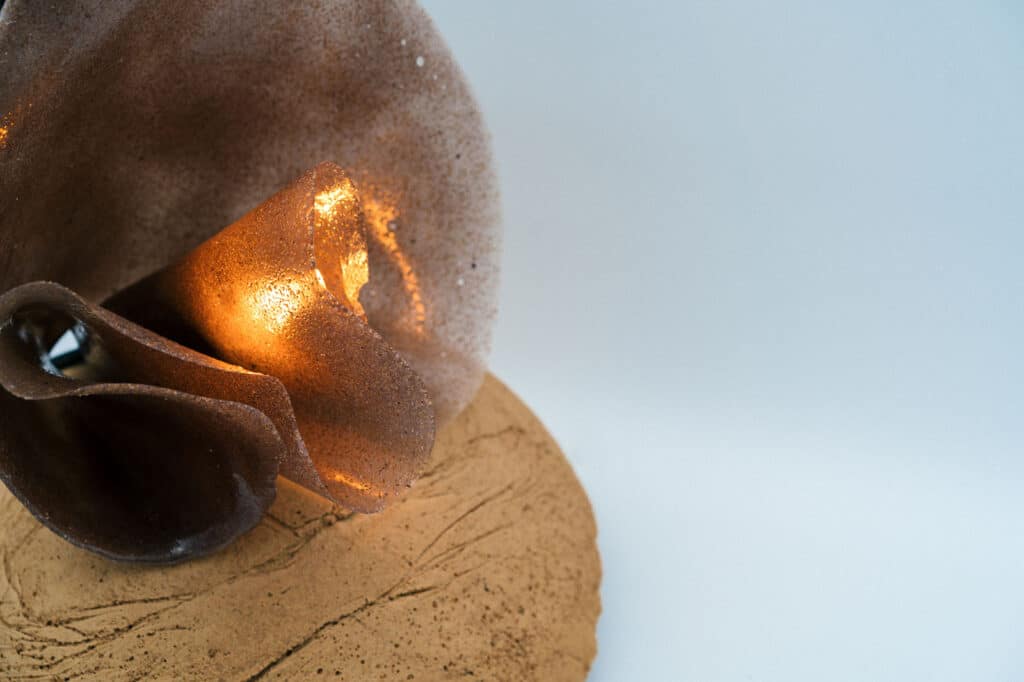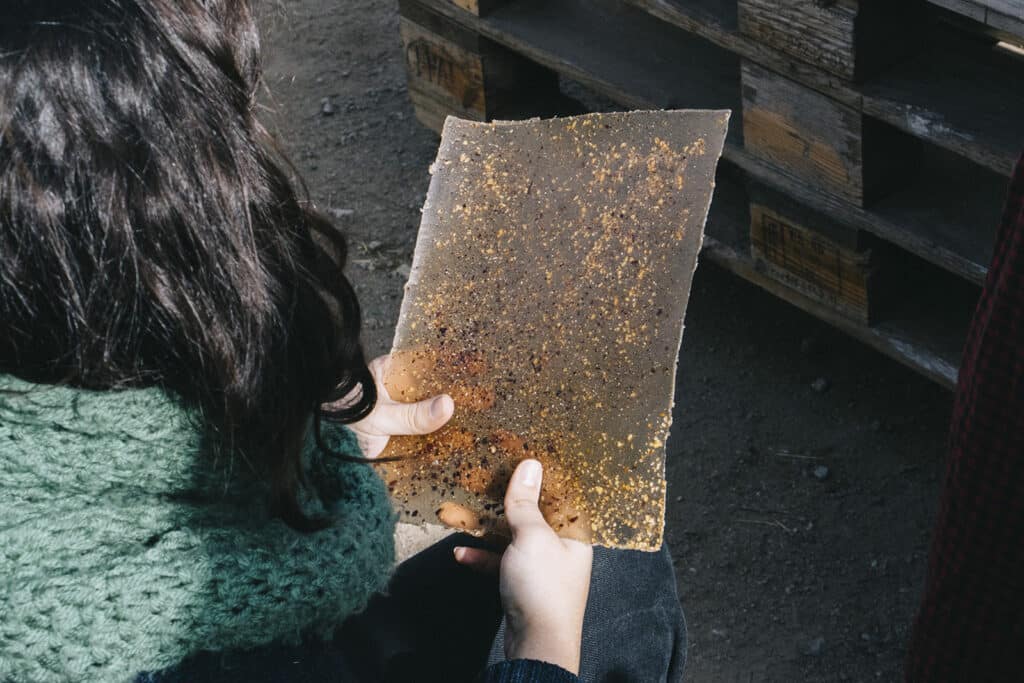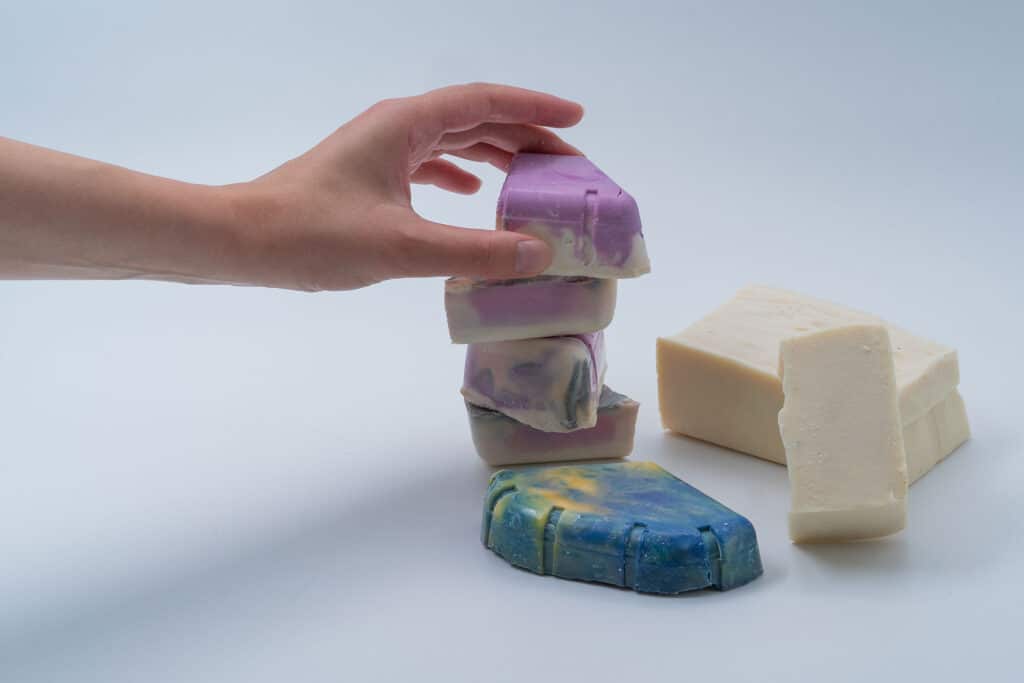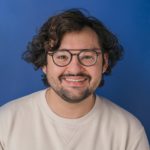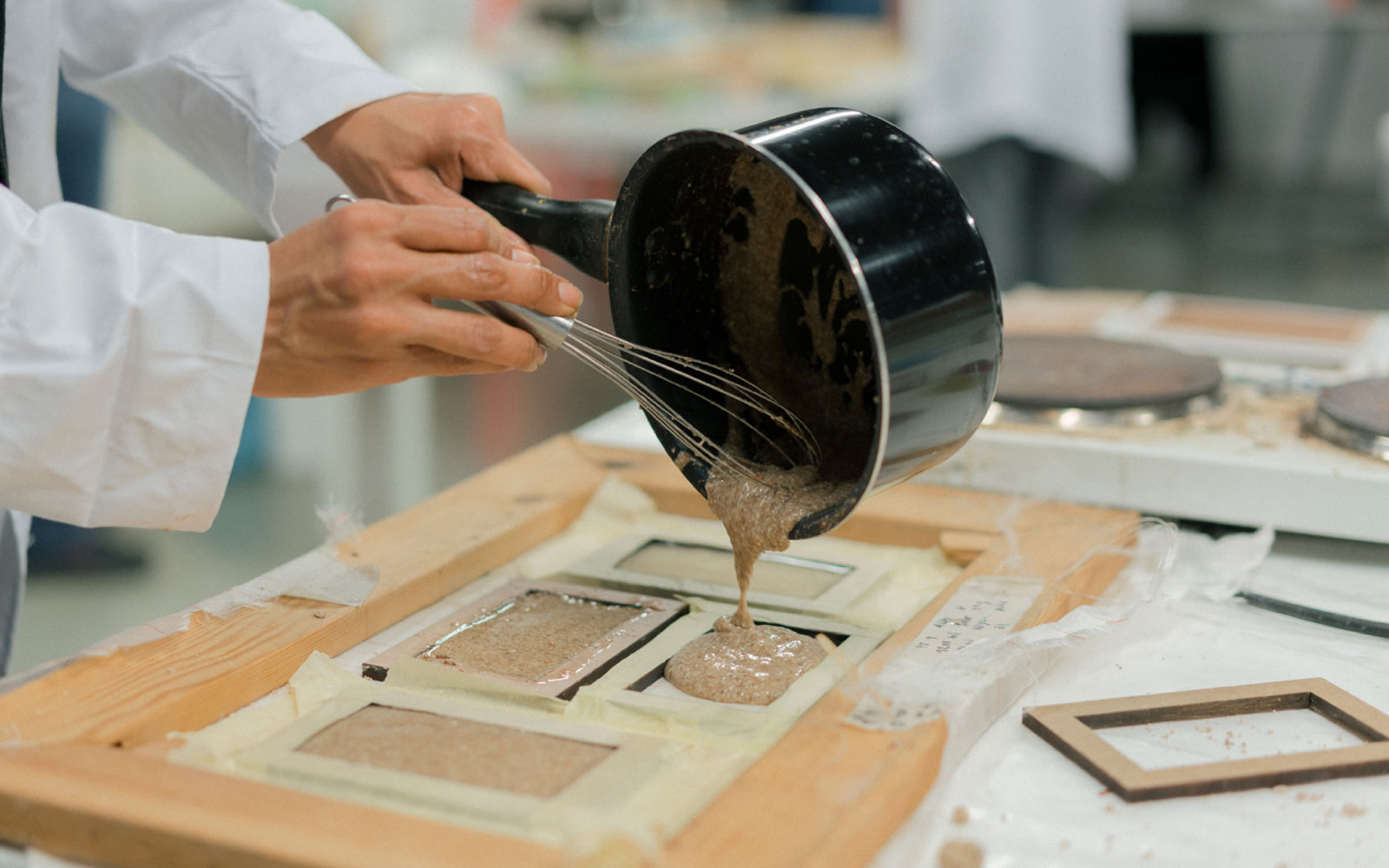
Biomaterials 101: From organic waste to material gold
Biomaterials give us a chance to rethink how we treat waste within our own homes.
A biomaterial or a bio-based material is a substance which is, or has been part of a larger, more complex biological system. The material interacts with other elements and plays a role within this system. Currently, biomaterials are mostly known to be used in the medical sector. For example, biomaterials (or synthetic materials) can be implanted into the body to replace a lost function.

How can biomaterials be used in design?
There has, however, been an increased design focus on biomaterials – with biomaterials labelled as “Material of the year” at the 2019 London Design Festival. The shift in attention from designers and makers to become more sustainable has encouraged innovative ways in understanding what our products are made from and more importantly, what could they be made from? This supports another way of thinking, that which creates a circular society – in which the production of materials do not damage but replenish natural systems, rather than creating a linear process in which ravishes natural systems, damages lives, livelihoods and homes along the way. The desire to challenge the way we make materials can be seen globally. Designers are now looking at material previously considered waste within these linear systems and designing new products, platforms and processes.
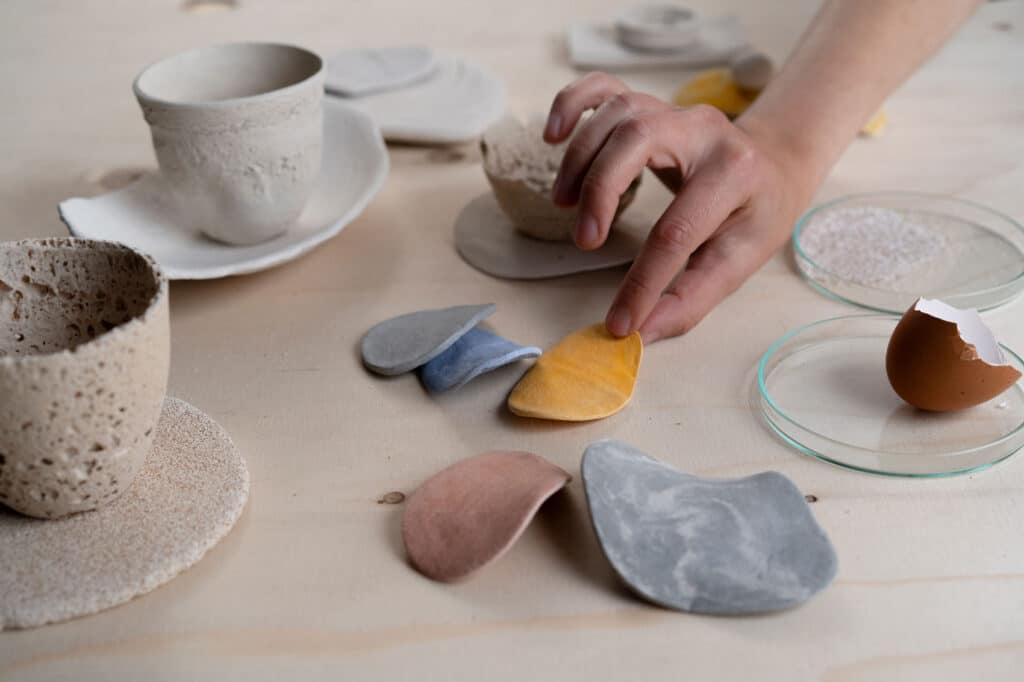
Where do biomaterials often come from?
The ‘ingredients’ in biomaterials, often come from linear industrial processes (which produce lots of waste that can, in fact, be used). Biomaterials designers often look towards the food industry for inspiration due to an abundance of previously-considered ‘waste’ material. The food industry produces colossal amounts of waste per year, contributing to 8% of global emissions (not so good for our planet’s health). Food waste is also a great place to start looking to create biomaterials, partly due to the fact it is already a biomaterial, but also due to the easy compatibility of the chemical components in food. For example, many bioplastics consist of starch, glycerin and vinegar. Potato peel is high in starch, meaning it is suitable for bioplastics – a plastic which will biodegrade, nor damage oceans, does not use non-renewable oil or intensify pollution in the Global South.
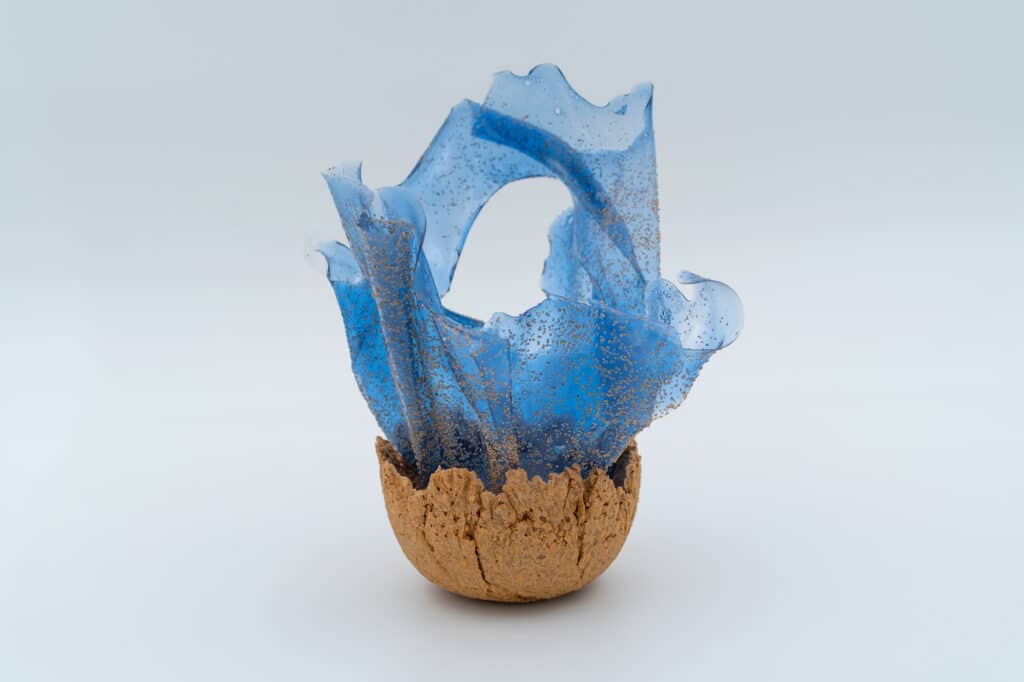
Companies designing with biomaterials
Chip[s] Board is a commercial, successful design example of using potato peel waste to create beautiful, new products. A huge success at the London Design Festival, Chip[s] Board showcased bioplastic and fully biodegradable and recyclable sunglasses.
Another great example is Shellworks . Shellworks creates bioplastics in varying strengths from discarded lobster shells. Chitin is the chemical composition of the lobster shell which is valuable in regard to bioplastics and is, amazingly, the world’s most second-abundant polymer. It is a question as to why we have not always transformed our waste into bioplastics.
click to tweetChitin is the world’s most second-abundant polymer.
Can I make biomaterials at home?
It is possible to easily make biomaterials at home, however, it does require time and patience. Think of it as the first time you make bread – it will not turn out like the crusty sourdough or the soft baguette in the bakery, but given time it will. This is the same for biomaterials. There are many open-source and online ‘recipes’ for making biomaterials, bioplastics in particular. We’ve compiled a list of our own resources below for creating biomaterials at home.
click to tweetWe’re looking forward to the day that ‘second-life’ is a norm, and ‘waste’ is no longer a thing.
Recipes to take away
SISCODE- El Barri Circular, Fab Lab Barcelona’s research lab as part of the European Union funded project, SISCODE, created an open call, Remix El Barrio, for local designers and makers to imagine new uses for food waste in our local neighbourhood of Poblenou, Barcelona. We showcased the work from this open call at an exhibition titled Exposición Remix el Barrio, you may have even seen it featured on a local Barcelona TV segment of RTVE, La Metro! As part of this exhibit, we worked with the designers to create a series of how-to videos and recipes which you can follow to re-create the materials in your own home. Below you will find a few of these tutorials along with lists of all the ingredients and supplies you need to create your own biomaterials.
Avocado Based Recipes
Three easy recipes from Anastasia Pistofidou, director of Fabricademy Barcelona. This is a great place to start for any beginners making biomaterials at home.
En(des)uso
En(des)uso is a project by Lara Campos created in response to an open call by Remix el Barrio. Lara used pine resin and food-waste to create a new biomaterial.
Dulces de Piel
Dulces de Piel is a project by Clara Davis created in response to an open call by Remix el Barrio. Clara used used cooking oil and bonding agents to create soap.
Kofi
Kofi is a project by Dihue Miguens created in response to an open call by Remix el Barrio. Dihue used coffee waste from NOMAD coffee in Poblenou, Barcelona to create a new biomaterial paper.
Circular GOS
Circular GOS is a project by Arleny Ares created in response to an open call by Remix el Barrio. Arleny used locally produced food waste to create a shelf stable dog treats.
REolivar
REolivar is a project by Silvana Catazine and Josean Vilar of Naifactory LAB created in response to an open call by Remix el Barrio. Silvana and Josean used locally produced olive pit waste to create new biomaterials.
Squeeze The Orange
Squeeze The Orange is a project by Susana Jurado, Elisenda Jaquemot and Nuria Bonet created in response to an open call by Remix el Barrio. Silvana and Josean used orange peel to create a new bioplastic textile which can be used in a similar application to leather.
Explore biomaterials hands-on at Fab Lab Barcelona
Other, more local examples from Fab Lab Barcelona, are being developed at Fabricademy – a 6 month Postgraduate course which holds material sustainability and innovation to its central aim. Applications for the 2021-2022 year are now open, classes start in September.
We’re also exploring biomaterials in our new EU funded project, Remix The School , where we’re hosting workshops and teaching students about upcycling principals and how waste can be transformed into new products.
Be sure to also be on the look out on our events page, we hosted a bio-plastics workshop called Circular Design: From Waste to Gold which was a part of Foodture 2020 and look forward to hosting more biomaterial workshops and events in the future.
Biomaterials or biobased materials, provide a promising outlook for any budding material designers of the future. As we invest more of our time into looking at natural systems, we develop more efficient and scalable systems which may actually nourish our environments. We’re looking forward to the day that ‘second-life’ is a norm, and ‘waste’ is no longer a thing. We may even be able to compost our shoes. Imagine that.
Additional Resources:
- To make spoons, plates and mugs – Eggshell composite.
- To make bioplastics – Bioplastic cookbook by Fab Textiles at Fab Lab Barcelona.
- Fab Textiles online resources.
